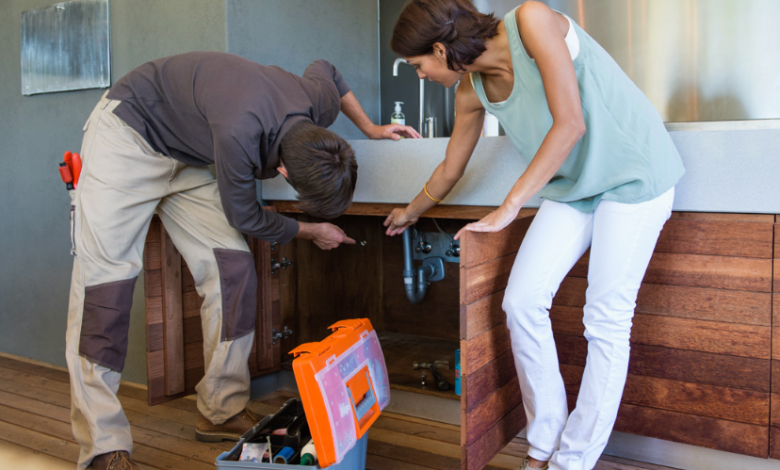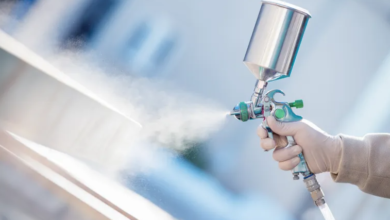Safety at Home Begins With Simple Maintenance

Keeping your home safe is a top priority, but it doesn’t always require expensive security systems or major renovations. In fact, some of the most effective safety measures are simple, routine maintenance tasks that you can perform yourself. By staying on top of small repairs and regular checks, you can prevent common household hazards like fires, water damage, and structural issues before they become serious problems.
This guide will walk you through essential maintenance tasks that significantly boost your home’s safety. From cleaning your gutters to testing your smoke alarms, these straightforward steps will give you peace of mind and help you create a secure environment for you and your family.
The Unseen Dangers: Why Maintenance Matters
It’s easy to overlook the small things. A bit of lint in the dryer vent or a few leaves in the gutter might not seem like immediate threats. However, neglecting these simple tasks can lead to dangerous situations. Clogged dryer vents are a leading cause of house fires, and overflowing gutters can cause significant water damage to your home’s foundation and roof. Regular maintenance is not just about keeping your house in good condition—it’s about proactively eliminating risks.
1. Clear Your Gutters and Downspouts
Your gutters play a crucial role in directing rainwater away from your home’s foundation. When they become clogged with leaves, twigs, and other debris, water can overflow and pool around the base of your house. This can lead to a host of problems, including:
- Foundation Damage: Water saturation can cause cracks in the foundation.
- Roof Leaks: Clogged gutters can force water under your roof shingles, leading to leaks and rot.
- Pest Infestations: Standing water and damp debris create an attractive environment for insects and rodents.
How to do it:
Aim to clean your gutters at least twice a year, typically in the spring and fall. Use a sturdy ladder and wear gloves to scoop out debris. After clearing the gutters, use a hose to flush the downspouts and ensure water is flowing freely. If you’re not comfortable on a ladder, consider a professional service for gutter cleaning in Ogden to handle the job safely.
See also: How to Pick the Right Garage Door for Your Home
2. Test Smoke and Carbon Monoxide Detectors
Smoke and carbon monoxide detectors are life-saving devices, but they only work if they are functioning correctly. According to the National Fire Protection Association, the risk of dying in a home fire is 55% lower in homes with working smoke alarms.
How to do it:
Test your detectors monthly by pressing the test button. You should hear a loud alarm. Replace the batteries at least once a year, even if they seem to be working. A good habit is to change them when you change your clocks for daylight saving time. Most detectors need to be replaced entirely every 10 years.
3. Check and Clean Your Dryer Vent
Lint buildup in your dryer vent is a serious fire hazard. The U.S. Fire Administration reports that clothes dryers are responsible for thousands of residential fires each year. A clogged vent not only poses a fire risk but also makes your dryer less efficient, increasing your energy bills.
How to do it:
Clean the lint filter after every single load—no exceptions. At least once a year, you should disconnect the dryer from the wall and clean the full length of the vent pipe. You can use a vacuum or a special vent cleaning brush to remove all the accumulated lint.
4. Inspect Electrical Cords and Outlets
Faulty wiring and overloaded circuits are another common cause of house fires. A quick visual inspection of your home’s electrical system can help you spot potential problems before they escalate.
How to do it:
Regularly check electrical cords for signs of fraying or damage. Avoid overloading outlets or extension cords with too many plugs. If an outlet feels warm to the touch or a switch doesn’t work correctly, it’s best to call a qualified electrician to investigate.
5. Secure Rugs and Clear Walkways
Trips and falls are one of the most common causes of injury at home, especially for children and older adults. Creating clear, unobstructed pathways and securing loose items can dramatically reduce this risk.
How to do it:
Use non-slip pads under area rugs to keep them in place. Make sure walkways are free of clutter, cords, and furniture. Good lighting is also essential, so ensure hallways and staircases are well-lit, and consider adding nightlights for extra safety.
A Safer Home is a Well-Maintained Home
Taking a proactive approach to home maintenance is one of the most effective ways to ensure your family’s safety. By dedicating just a few hours each season to these simple tasks, you can prevent serious accidents and costly repairs. Start with this checklist and build a routine that works for you. A little effort today can provide lasting security and peace of mind for years to come.





